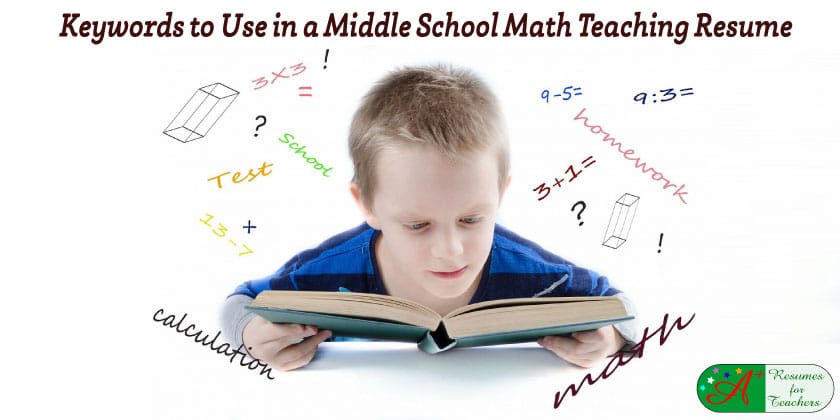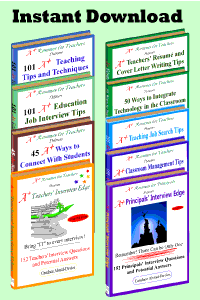When crafting a middle school math teaching resume, incorporating relevant keywords and phrases is essential to ensure your application stands out to potential employers and passes through applicant screening software. Here are some critical keywords and phrases to include in your resume, along with examples of how to integrate them effectively:
-
Student Motivation and Engagement:
- Utilized real-life examples and interactive activities to enhance student engagement with mathematical concepts.
- Implemented innovative teaching strategies to captivate students’ interest and foster a love for math.
-
Innovative Math Instruction:
- Integrated technology tools and multimedia resources to deliver dynamic and engaging math lessons.
- Designed hands-on activities and project-based learning experiences to promote critical thinking and problem-solving skills.
-
Math Methodology:
- Demonstrated expertise in delivering clear and concise math instruction to facilitate student understanding and mastery of concepts.
- Employed effective instructional methods to scaffold learning and support students of varying skill levels.
-
Classroom Management:
- Established a positive and structured learning environment conducive to student success and academic growth.
- Implemented proactive strategies for behavior management and conflict resolution to maintain a productive classroom atmosphere.
-
Behavioral Management Strategies and Techniques:
- Employed positive reinforcement and individualized behavior plans to address student challenges and promote positive behavior.
- Implemented restorative justice practices to foster a sense of accountability and responsibility among students.
-
Creative Lesson Planning:
- Developed engaging and differentiated lesson plans tailored to meet students’ diverse needs and learning styles.
- Incorporated interdisciplinary connections and real-world applications to make math relevant and meaningful to students.
-
Differentiated Instruction:
- Utilized various instructional strategies and materials to accommodate students with diverse learning needs and abilities.
- Provided targeted interventions and enrichment activities to support students who require additional assistance or challenges.
-
Authentic Assessments, Ongoing Assessments, and Progress Monitoring:
- Implemented formative and summative assessments to measure student progress and inform instructional planning.
- Utilized data-driven assessment data to identify areas of student growth and areas needing improvement.
-
Data-Driven Instruction:
- Collected and analyzed student performance data to inform instructional decisions and modify teaching strategies.
- Utilized data management tools and spreadsheets to track student progress and evaluate the effectiveness of instructional practices.
-
Professional Development:
- Actively participated in professional development opportunities to stay abreast of current educational trends and best practices.
- Completed coursework and attended workshops to enhance pedagogical knowledge and instructional effectiveness.
-
Collaboration:
- Collaborated with colleagues to develop interdisciplinary units and align curriculum standards across grade levels.
- Participated in grade-level meetings and PLCs to share instructional resources and best practices with fellow educators.
By incorporating these keywords and examples of bullet accomplishments into your middle school math teaching resume, you can effectively highlight your qualifications, skills, and experiences to impress potential employers and increase your chances of securing a teaching position.
- Technology Integration:
- Integrated educational technology tools and digital resources to enhance math instruction and student learning outcomes.
- Utilized interactive whiteboards, educational software, and online learning platforms to create interactive and engaging math lessons.
-
Differentiated Instruction:
- Implemented flexible grouping strategies and tiered assignments to meet the diverse learning needs of students.
- Provided individualized support and enrichment opportunities to ensure all students access high-quality math instruction.
-
Student-Centered Learning:
- Fostered a student-centered learning environment where students take ownership of their learning and actively engage in mathematical inquiry.
- Encouraged student collaboration, critical thinking, and problem-solving skills through inquiry-based learning activities.
-
Project-Based Learning:
- Designed and facilitated project-based learning experiences that allow students to apply mathematical concepts to real-world problems and scenarios.
- Guided students through conducting research, analyzing data, and presenting their findings using mathematical models and representations.
-
Formative Assessment Strategies:
- Implemented formative assessment techniques such as exit tickets, quizzes, and peer/self-assessments to monitor student progress and inform instructional decisions.
- Used assessment data to provide timely feedback to students and adjust teaching strategies to address areas of misunderstanding or confusion.
-
Culturally Responsive Teaching:
- Incorporated culturally relevant materials and examples into math instruction to make learning meaningful and appropriate for all students.
- Celebrated diversity and encouraged students to share their cultural perspectives and experiences in the math classroom.
-
Growth Mindset Development:
- Cultivated a growth mindset culture in the classroom by praising effort, resilience, and perseverance in problem-solving.
- Encouraged students to embrace challenges, learn from mistakes, and develop a positive attitude toward learning math.
-
Parental Involvement and Communication:
- Established open and transparent communication channels with parents to inform them about their child’s progress and academic achievements.
- Encouraged parental involvement in student learning through homework support, volunteer opportunities, and family math nights.
-
Professional Learning Communities (PLCs):
- Participated in professional learning communities to collaborate with colleagues, share best practices, and discuss student achievement data.
- Engaged in ongoing professional development to enhance math content knowledge, pedagogical skills, and instructional strategies.
Incorporating these additional keywords and examples of bullet accomplishments into your middle school math teaching resume will further showcase your expertise, qualifications, and commitment to student success, increasing your chances of securing a teaching position.


